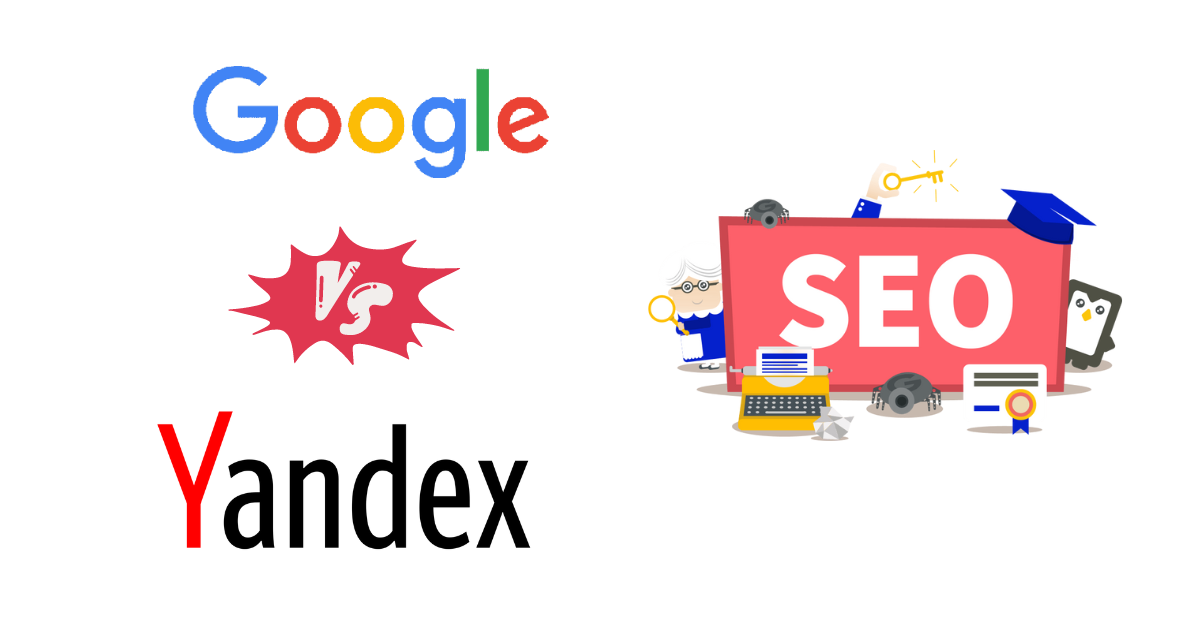There are some key differences between Yandex and Google that merit your attention, but the fundamentals of successful SEO for Google can also be applied to Yandex.
One of Google’s most competitive areas is Russia, where Yandex has a 44% market share compared to Google’s 53% at the time of writing.
Yandex, however, is much more than a simple search engine. It has changed to become a consumer technology company over the past 20 years. Today, Yandex is expanding its services even further to include grocery delivery and personal and company finance.
Because of this, and specifically for the goals of this article, I’ll only contrast Google Search with Yandex’s search product (and products directly related to website performance).
The principles of effective Optimization for Google also apply to Yandex.
However, there are some significant differences between Yandex’s handling of various technologies and what you should anticipate as a result.
Read Here: Your Complete Online Marketing Guide: Digital Marketing
Technical SEO Differences
Let’s examine some of the key distinctions between Yandex and Google in terms of technological SEO.
Search engines can locate, store, and display the content of a website. Following processing, scoring, and comparison to other papers, it is ranked and presented on search results pages in accordance.

The way Google and Yandex handle a website’s technical components is generally very similar. Nevertheless, when optimizing for the RuNet, there are a few distinctive variations that must be taken into account.
1.JavaScript
Yandex, in contrast to Google, has trouble crawling and indexing web pages that use JavaScript. Yandex won’t index single-page apps that were created entirely in JavaScript and weren’t pre-rendered (or dynamically rendered).
Confusion arose when Yandex announced the Vega algorithm update towards the close of 2019. The business mentioned pre-rendering search results for mobile users in the same news release.
Some people have believed this to mean that Yandex pre-renders websites for search reasons.
Yandex actually uses AI to better predict the user query and pre-fetch and preload relevant search results pages, reducing user friction when using the search service.
2.Turbo vs. AMP
Google offers AMP, but Yandex offers Turbo. Turbo has received a similar response from the SEO community in Russia, with advocates from both sides arguing persuasively for and against its necessity.
Webmasters initially criticized Turbo pages as being limiting and “a novelty” for content websites when they were first introduced.
However, they have improved recently to enable more customization, advertisements, and e-commerce functionality (with multiple payment options). I’ll talk more about that shortly, but turbo pages also raise the visibility of a site’s “quality stamp” in search results pages.
3.Targeting by Site Area
Similar to Google, Yandex has algorithms and factors for searches with a local focus, or geo-dependent queries as Yandex refers to them.
For user happiness, this is significant given the size of Russia.
To help Yandex display specific website types in the appropriate SERP geo-locations and to make sure they are seen by their target user base, Yandex strongly advises (recommends) that they use a “regional binding” option within Yandex Webmaster Tools.
For general article/content websites without a regional emphasis, like the one in the image above, Yandex recommends against requiring a regional binding.
The areas in which they operate should be stated on websites that concentrate on local or location-specific subjects, such as newspapers, some magazines, or websites that sell goods or services that are not available nationally.
- Remarkable Mention: Hreflang
The fact that Yandex did not enable hreflang via XML sitemaps would have been highlighted if I had written this article a year earlier.
However, in August 2020, Yandex webmaster documentation underwent changes regarding internationalization support, and a new part addressing XML sitemap hreflang was added.
Now, Yandex and Google both have the same hreflang support features.
- Search Dashboard vs. Webmaster Tools
Yandex’s Webmaster Tools were fairly limited a few years back. However, the Yandex team has made significant infrastructure investments in recent years.
The main variations are listed below to help you track, index, and gather more knowledge about how your campaigns are doing across Yandex organic search.
Read Here: How does SEO Help Your Business Grow?
4.Active URL Monitoring
The ability of Yandex Webmaster Tools to continuously track up to 100 URLs on your website is a really useful tool. You can designate which URLs you want to monitor, and this feature updates automatically.
It will inform you of the current page state, the last time the page was crawled or indexed, and which version of the page is displayed in results.
The lower URL in the image above last had a 200 response on April 17 and is currently being used in search results.
You can find out when your updated content is reindexed and then provided to users when combined with crawl stat reporting (which is offered in Yandex WMT).
5.Quality Mark Badges
Google has experimented with showing icons in the SERPs in preparation for the upcoming Page Speed experience upgrade.
This is novel for Google, whereas Yandex (along with Baidu) and Baidu have been displaying icons in search results for some time.
Yandex has 16 icons it can choose to show that are referred to as site quality indicators.
Some of these are possible with certain technological configurations, like the Turbo page badge.
Others, like the Popular site badge, depend on the website receiving a good SQI (Site Quality Index) score, which is determined by a variety of variables, such as:
- how many people visit the page.
- A rough measure of user satisfaction (behavioral signals).
- How much faith Yandex has in their own website (inferred EAT signals).
There are several other factors, and it’s essential to note that Yandex has become very adept at spotting attempts by marketers to artificially game the system because a number of its algorithms and quality determinations rely on user behavior signals.
“SQI values for a website can be reset, or removed, if they see attempts to influence the score,” Yandex states in its documentation.
Google Vs Yandex
When contrasting Google and Yandex, there is no obvious victor. Both of the two have benefits and drawbacks. Google is by far the market leader in terms of search engine supremacy, but Yandex is a strong competitor. Yandex is the most widely used search engine in Russia.
Because of Yandex (YNDX -5.7%9%), these businesses are commonly referred to as “the local Googles” in their respective nations. Despite this, over the past few months, their prices have decreased by 11.1% and 15%, respectively. What could emerge as Google’s next technological superpower? Yandex’s annual revenue rose by 23% to 18.09 billion rubles ($248 million).
In Russia, the number of search queries on the website grew by 5%, and the total number of advertisers increased by 24%. Yandex launched an antitrust complaint against Google in February. Google pre-installs first-party apps on Android devices, which is against the law and is one of its acts.
What is a Yandex disk?
Yandex offers Yandex Disk, a cloud storage, file synchronization, and file sharing tool. Users can share their files online with others and keep them in the cloud. Yandex introduced it in 2012. It provides 10 GB of unrestricted storage. For a fee, it provides a restricted maximum storage space. The most capacity Yandex Disk can offer is 1024 GB.
- Yandex is the owner of it.
- It first debuted in 2012.
- Yandex was behind its creation.
- It provides 10 GB of unrestricted storage.
- It offers a minimal amount of maximal storage.
- It is a hosting tool for files.
- Its highest storage capacity is 1024 GB.
- File versioning is not supported by it.
- Cloud storage is offered by it.
- Client-side encryption is not enabled.
- 2 GB and 50 GB are the maximum file sizes that can be uploaded respectively via the web and an application.
- It has a daily volume or bandwidth cap of 200% of the storage capacity.
- Additional 10 GB of complementary storage are available for references.
Information And Costs For Yandex Translate API
The Yandex translate component, which is part of the media section, is still needed to interpret despite the addition of other user interface components. Add it to the browser as a result. This component doesn’t take up any screen real estate because it uses the Yandex translate API to operate in the background.
What exactly is Yandex Translate API?
This component’s properties section includes a place where you can put a Yandex key. It is an API token that is used to authenticate requests to the Yandex translation API. For you to use their service in your applications, you must have an API key.
A key to use Yandex translation has already been introduced by default in App Inventor. While trying the app, it functions well. But you must use your own API secret if you want unbroken service
The Yandex translate API has also been added. Up to this point, we have added components with a straightforward and fundamental design, changed their default names for clarity, and added the components. Let’s learn more about Yandex Translate and how to generate an API pass for our translation tool.
